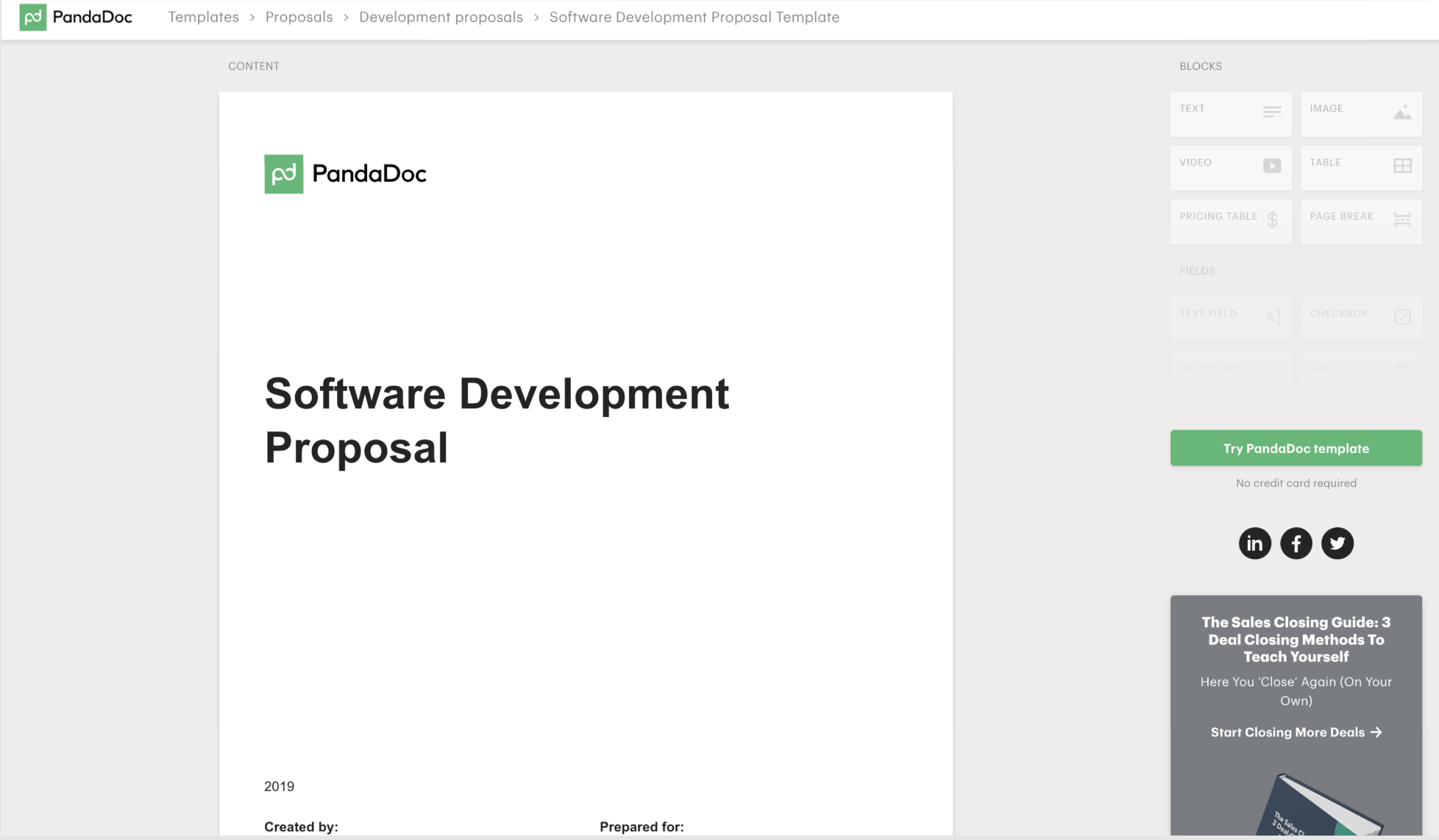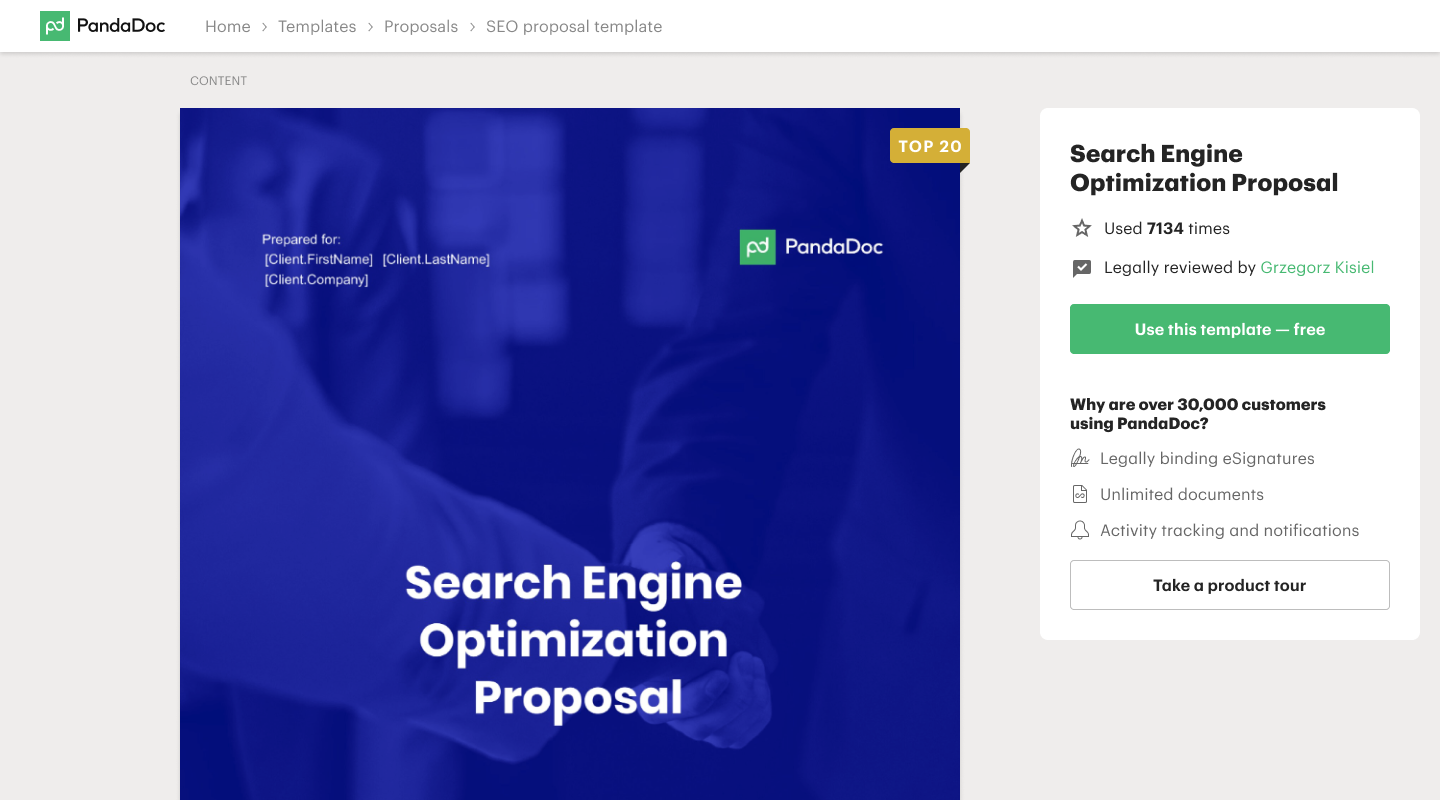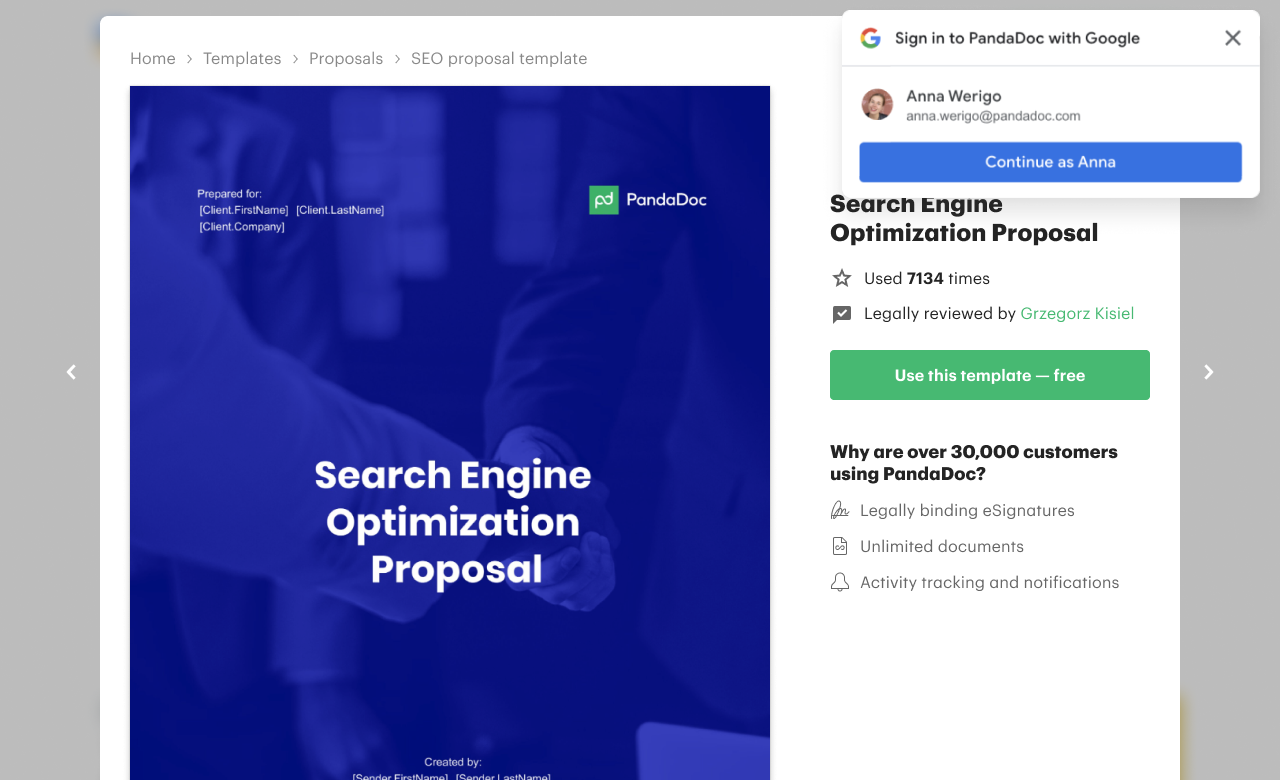
Customer Acquisition Strategy: Unlocking the Power of Document Templates
Acquisition is the art of attracting new customers, and it's one of the most essential stages of the product funnel. This article will share how PandaDoc, an all-in-one document management solution, learned to acquire new customers using document templates.
Why document templates?
The foundation of any successful product is a deep understanding of the customer and their needs. Products are designed to solve specific problems for customers, and the success of an acquisition channel is determined by the ability to identify customers whose problems can be solved by the product and who are willing to pay for the solution.
PandaDoc is in the business of all things documents. We help customers create, send, and eSign documents. Given the nature of business documents, it is not surprising that people often search for templates as a starting point when creating new documents. The traffic potential of document templates was significant, and the beauty of such templates is that they are only useful when signed.
No one reads Non-Disclosure Agreements (NDAs) or Master Service Agreements (MSAs) for fun; if they are reading any of these documents, the obvious next step is to sign them. For this to happen, the potential customer will need to edit the template in PandaDoc and send it for eSign, preferably using PandaDoc's platform.

Ready, set, fail
In 2014, the PandaDoc team created the first Minimal Viable Product (MVP) of document templates. We published them on the website and monitored the results. Despite significant traffic, the project failed to generate sufficient sign-ups and was considered an ineffective acquisition channel, leading to its discontinuation.
As time passed, organic traffic on the template pages continued to increase at a rapid pace. However, conversion to sign-up remained at less than 1%. At first, we were disappointed with our efforts to showcase PandaDoc through document templates, as 99% of visitors did not interact with the product. But as the volume of traffic was too substantial to ignore, we decided to give it another try.
If the templates were presented as a blog post, the outcome would have been more predictable — visitors would have accessed the information and subsequently left the website. Instead of writing articles on how to create business templates, we offered page-by-page document templates. Through further analysis, we discovered that searching for something like an "NDA template," in most cases, implies two things: users do not have an NDA template, and they need an NDA template ASAP.
Experimenting for Success
Upon further examination, it was obvious that we had fallen into the trap of creating an MVP — that did not fully meet the needs of our potential customers. While the first aspect of the MVP — attracting potential customers to the PandaDoc website — was successful, the second aspect — encouraging interaction with the product — was not. So we decided to undertake a series of experiments to address and fix the issue.
Experiment 1: Update templates
Our previous templates didn’t meet professional standards. That was particularly the case concerning formats such as proposals heavily relying on design and layout. To address this, we redesigned 20 templates and added a well-designed, structured layout that our potential customers could easily customize.
.gif)
.gif)
Result: +100 to conversion
Experiment 2: Be clear
Through interviews and A/B/C/D testing, we discovered that the wording on our main call-to-action (CTA) button, "Try PandaDoc Template," confused potential customers. Further testing revealed that alternative wording effectively conveyed the intended message.


Result: +20% to conversion
Experiment 3: Add more info about PandaDoc
The initial research and customer interviews showed that potential customers needed more information about our product before they created an account. To verify this assumption, we conducted an A/B test and found that additional information about the product was not a major concern among our target audience.
Result: -10% to conversion
Experiment 4: Add social proof
Social proof is a cognitive bias used by the overloaded human brain to solve a task by copying the behavior of the big group. To better communicate the value of our product to potential customers, we added a subtle form of social proof to our template web pages. We included a small counter to display the number of times a template had been used. It helped leverage the influence of others' actions on user behavior.

Result: +15% to conversion
Experiment 5: Simplify the signup
At PandaDoc, we follow a Product-Led Growth (PLG) approach that allows potential customers to interact with our product without any barriers. We implemented minimal signup requirements — only three essential fields to interact with PandaDoc templates.
Result: +2% to conversion
Experiment 6: Offer one tap to a signup
As previous experiment results were disappointing, we tested the most radical signup option — a one-tap signup widget by Google.

Result: +30% to conversion


To sum up
PandaDoc's journey to acquire customers through public document templates was not a straightforward process. Initially, the project was considered ineffective, but as the traffic potential of templates grew, the team gave it a second chance. Through a series of experiments, we increased its conversion to signup rate by fixing the MVP, redesigning templates, and creating a clear CTA.
Now up to one-tenth of PandaDoc paying customers are acquired by document templates. This serves as a reminder that customer acquisition requires continuous experimentation and learning to find the right approach that works for your business.

The Evolution of Onboarding at PandaDoc
When you join a new company it is like entering into a huge building you’ve never been to before. All you know is the building address and a couple of people that walked you in through a labyrinth of corridors to your desk. And there are doors everywhere with no names on them...of course, you will feel lost.
.png)
Cultural fit interviews: how to experiment and measure results
Today’s recruiting processes go far beyond qualifications, skills and experience. And candidates must expect to be assessed based on their cultural fit. Whether their values and visions align with company’s. So, we will explain what a cultural interview is, how it is conducted at PandaDoc and how it helps to run the business.

How PandaDoc Experiments with Monetization
At PandaDoc, we value our culture and people. Today, we want to share more about the people behind our product by spotlighting two fabulous women leaders at PandaDoc: Tatsiana Sialitskaya, Engineering Manager, and Kira Glushko, Director of Product Analytics.

